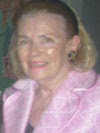
The tower is a replica of Machu Picchu. For me, the sacred “lost city of the Incas” had long been a some-when destination, although I had never done anything about it. I said so aloud at the ball. Peruvian Ambassador Felipe Ortiz de Zevallos, who was hosting the black-tie reception, answered that Machu Picchu had been there for centuries, but there was no time like the present. He added, “Whenever you go to Peru, you will have a warm welcome.”
He was right. Even in bustling Lima, the capital city--and capitals are often impressive but impersonal--I’ve been charmed by the warmth of strangers, and these not just service personnel, with an eye out for tips.
Ever since growing up as a California beach bunny, I felt the tug of travel; I’ve covered a lot of territory since. Having two traveler husbands--sequentially--helped.
With one I traveled from the hanging gardens of Xoximilco to Picasso’s studio in Vallauris, spending almost two decades in Europe with him, crisscrossing the continent and living in five countries. A writer, he traveled hard, with a take-no-prisoners determination to see whatever there was to see, from dawn to long after dusk; I do that too.
The other was for many years an explorer, before he settled down as an editor. He had already seen most of the world anyway, so traveling with him was leisurely.
They are gone, and I travel alone now, by choice. People get tired, they need to rest, or are hungry at inopportune times, so then you miss the boat or plane or pony cart--or whatever gets you around.
I found recently, when reading the ghoulishly titled 1,000 Places to See Before You Die, that I had already seen over 300 of them. I didn’t know I had a bucket list, but Machu Picchu, voted one of the new seven wonders of the world, isn’t a bad place to start one.








